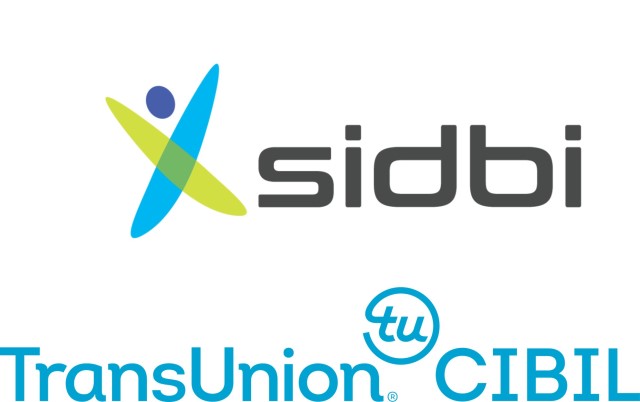MUMBAI: India’s commercial credit portfolio grew by 11% year-over-year (YOY) and credit exposure stood at INR 28.2 Lakh Crores at the end of the quarter ending September 2023, according to the latest TransUnion CIBIL-SIDBI MSME Pulse Report. Insights show that increased economic activity has spurred the demand for commercial loans, which grew 29% YoY. Supply volumes grew by 20% year-over-year (YoY) in the July-September 2023 quarter, indicating improved lender confidence.
Speaking on the findings of this edition of the MSME Pulse, Sivasubramanian Ramann, Chairman and Managing Director, of SIDBI, said: “Lending to the MSME sector continued in H1:FY2024, despite the conclusion of the Emergency Credit Line Guarantee Scheme (ECLGS) scheme, indicating underlying growth momentum of the sector. Technology is aiding in lending to the MSME sector. Facilitating wider adoption of online loan applications, financial management tools, and digital payment platforms along with the utilization of robust analytics, can enhance the lending to the MSMEs and help fortify India’s businesses for sustained growth. SIDBI is working on the above lines and is leveraging technology, utilizing the Digital Public Infrastructure of the Government of India, to augment credit flow to the sector with faster turnaround.”
In the July-September 2023 quarter, the total value of new MSME credit originations was INR 243K Crores, with Small segment enterprises accounting for the largest share at 42%. Sustained credit supply has enabled substantial portfolio growth of 11% amounting to INR 28.2 Lakh Crores across 80 Lakh MSME entities in the quarter under review.
During this period, overall balance-level delinquencies, measured as 90 days past due to 720 days past due and those reported as ‘sub-standard’, have improved and stood at 2.3%.
“MSME portfolio performance improved across all borrower segments as delinquency rates declined. In the quarter ending September 2023, we saw the lowest delinquency rate in the last two years. With promising economic growth prospects reflected through strong demand, stable portfolio growth, and improved credit performance, now is a good time for lenders to expand their MSME lending book. The sectoral study covered in this MSME Pulse report showcases the unique nuances of each sector within the MSME segment. The wide spectrum of occupations covered by MSMEs has the potential of catalyzing social development through economic empowerment,” added Rajesh Kumar, Managing Director and CEO, of TransUnion CIBIL.
| Table 1: Mapping India’s MSME credit sector Demand (Commercial Credit Inquiry Volumes) Indexed to: July-September 2021 = 100 | ||
| July-September 2022 | July-September 2023 | YoY Growth (%) |
| 132 | 170 | 29% |
| Supply (MSME Disbursement Volumes- In Lakh) | ||
| July-September 2022 | July-September 2023 | YoY Growth (%) |
| 9.3 | 11.2 | 20% |
| Growth (Balance-Sheet MSME Credit Exposure – In ₹ Lakh Crore) up to 720days | ||
| September 2022 | September 2023 | YoY Growth (%) |
| 23.0 | 25.7 | 12% |
| Performance (Delinquency Rates) | ||
| 90-720dpd (incl Sub-standard) * | ||
| September 2022 | September 2023 | YoY Change (bps) |
| 3.0% | 2.3% | -0.7% |
The MSME portfolio excludes ~ ₹ 2.5 lakh crores of default cases beyond 720 days past due (DPD) /loss /doubtful category. The delinquency rate definition excludes legacy accounts with DPD beyond 720 days or reported as loss/doubtful
By building an online lending journey with analytical and objective credit risk assessment tools like FIT Rank, lenders can achieve improved operational efficiencies and reduce turnaround times significantly.
Rapid credit expansion across semi-urban and rural geographies
In the July-September 2023 quarter, 46% of MSME originations were in semi-urban and rural regions. Almost half (49%) of the Micro2 segment’s originations came from the semi-urban and rural areas, whereas 39% of originations in the Small segment came from these regions.
| Table 2: Share of Origination Volume – (Jul-Sep 2023 YoY) | ||||
| Borrower Characteristics | Overall | Micro | Small | Medium |
| Semi Urban and Rural | 46% | 49% | 39% | 34% |
| Medium Risk | 55% | 61% | 41% | 20% |
| New to Credit | 46% | 61% | 5% | 1% |
- Micro Exposure up to INR 1 Cr; Small: Exposure between INR 1 Cr and INR 10 crs; Medium Exposure between INR 10 crs and INR 50 crs
- Medium Risk: CMR 4-6 (Share of Borrowers)
- The risk percentage is based on the origination data where the risk score is available.
One of the key factors contributing to this expansion is the improvement in credit profiles of MSMEs – the share of high-risk MSMEs (CMR 7-10) has reduced to 13% in the July-September 2023 quarter from 15% during the same period the previous year. Medium risk (CMR 4-6) continues to have a high share with 55% of MSMEs in this risk segment.
Analysis across the states shows that originations from the large states with Maharashtra, Gujarat, Delhi, Tamil Nadu, and Uttar Pradesh continue to be high, accounting for 47.2% of the origination value. There is also a higher growth rate especially in Uttar Pradesh and Tamil Nadu in the quarter ending Sep 2023.
These states also account for approximately 42% of New-to-Credit (NTC) originations in the Micro MSME segment, further driving the credit inclusion initiative. Within the Micro MSME segment, Maharashtra has a high share in the low-ticket-sized Very Small segment and Micro1 segment, while Gujarat has a high share in the Micro 2 segment.
The manufacturing sector accounts for the highest credit originations
As per the latest information released by the Ministry of Statistics and Programme Implementation in December 2023, output in MSME manufacturing accounted for 40.83% of output in all India manufacturing during the year 2021-22. This is also reflected in TransUnion CIBIL Commercial Bureau data where the Manufacturing sector accounts for 37% of value originated and has the largest share, followed by the ‘Trades’ sector with a 28% share. Professional Services and Other Sectors together account for the remaining 35% share (of the data considered for this report).
Textiles is the highest contributing sub-sector within Manufacturing sector originations. The majority of originations within sub-sectors are led by the Medium segment (10 Crores to 50 Crores) and catered for by private banks. The geographical distribution of originations across sub-sectors is concentrated in three top-contributing states: Gujarat, Tamil Nadu, and Maharashtra. While the manufacturing sector accounts for 37% of origination value it has only 25% share of the volumes originated. However, the manufacturing sector experienced an increased share in originations by value within the Micro segment compared to the previous year. The ‘Trade’ sector accounts for the highest share of origination volumes with 39% of loans originating; 36% of these disbursements are from NTC MSMEs.
| Table 3: Trade Sector: Top 3 MSME loan originating states of FY 24-Q1 and Q2 | |||
| Sub-Sector | Highest | Second Highest | Third Highest |
| Retail Trade | Maharashtra | Uttar Pradesh | Delhi |
| Wholesale Trade | Maharashtra | Gujarat | Tamil Nadu |
As the borrower profile and credit behavior of each sector is different, these borrowers’ credit performance is also differently influenced by intrinsic sectoral impact. Leveraging data and analytics to understand borrower behavior is essential to continue sustainable growth across sectors. The core advantage of sector-wide growth is the vast geographical expanse it covers, spreading through areas where urbanization and multiple employment opportunities and development are essential.


